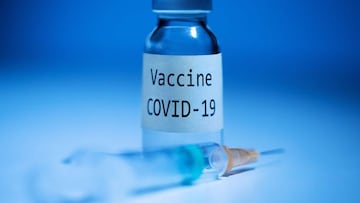How will the new coronavirus vaccine be distributed to the population?
There is a ray of hope now with Pfizer and Moderna announcing successful vaccine trials for covid-19, the question is when will it be available and to whom.

In the past couple of weeks as the number of coronavirus cases soars across the US a light at the end of the tunnel has appeared with first Pfizer and then Moderna announcing highly successful trial results of their respective vaccines. Once approved, the first doses could be distributed as soon as December. So who will be vaccinated first?
DYK? When you wear a mask, you protect others as well as yourself. Wear a mask, avoid crowds, stay 6 feet apart, and wash your hands often. Learn more: https://t.co/jkWwZTxyhs. pic.twitter.com/UI7aOi3LpK
— CDC (@CDCgov) November 16, 2020
The final decision has yet to be made but there is consensus among medical experts in the US and globally that healthcare workers and first responders should be immunized first.
The order in which the population as a whole will get access to a vaccine will be up to each state but they will follow the guidance of the CDC once the vaccine is approved and the health experts can decide based on the information available to them. The National Academy of Medicine recommends a four-phase approach.
As a vaccine for #COVID19 is being developed, questions about the process, from development to distribution, continue to arise. Join a free webinar on 11/18 to hear more about expected next steps: https://t.co/givR7ZA0li #COVID19Conversations pic.twitter.com/XOgLQIMUBj
— National Academy of Medicine (@theNAMedicine) November 17, 2020
Phase 1A: covering approximately 5 percent of the population
The first to get the vaccine would be frontline health workers in hospitals, nursing homes, and those who provide home care. Also people who provide services in the hospital and transport in addition to first responders.
Moncef Slaoui, the White House Vaccine Advisor said in an interview on NBC that between the two vaccines there should be enough to immunize about 20 million during the month of December.
Phase 1B: covering approximately 10 percent of the population
In Phase 1B people with underlying medical conditions that put them at a significantly higher risk, such as cancer or heart disease would get the vaccine. Also in this group would be older adults 65 and over who live in congregate living facilities such as nursing homes, homeless shelters or prisons.
Phase 2: covering 30-35 percent of the population
People over 65 years old and some frontline workers would get the vaccine in this phase. Frontline workers consist of people in high-risk settings and are critical to the running of society such as those who play a vital role in children’s education and development, K-12 teachers and school staff. Also, individuals who work in the food supply chain and public transport.
In phase 2 people of all ages with underlying medical conditions that put them moderately at risk would get vaccinated and people with chronic healthcare needs. As well people with challenging living settings that increase potential exposure and those that help them. This can include the homeless and prisoners.
Phase 3: covering 40-45 percent of the population
This group would cover young adults, those between the ages of 18 and 30, and children. Young adults have a wider network of contacts than older adults which makes them a high-risk group for transmission although they generally do not get severely ill.
Related stories
Included in this group would be workers in non-essential industries but important to the functioning of society and pose a moderately high risk of exposure. These industries include colleges and universities, hotels, banks, exercise facilities, and factories.
Phase 4: covering the rest of the population
In this phase anyone who wants to get the vaccine will be able to. Alex Azar the Secretary of Health and Human Services has said that the goal is to have enough doses available by the second quarter of 2021 for ever American that would like to get vaccinated.


